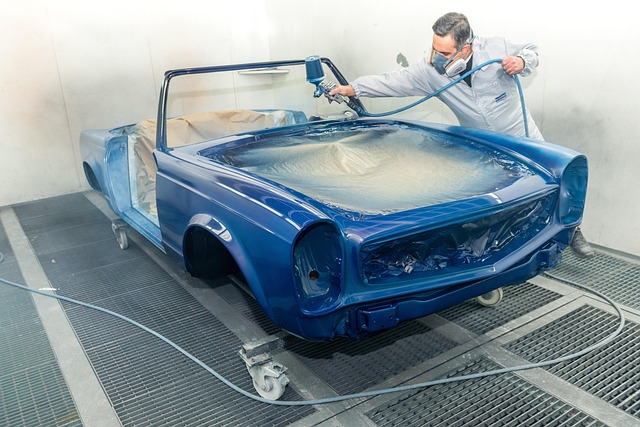After a basement flood, Denver water restoration begins with assessing damage: inspect for standing water, mold growth, and structural integrity. Swiftly remove water using pumps, then dry out the area with dehumidifiers and ventilation. Address moisture sources, clean visible water, and sanitize to kill mold spores. Finally, repair structural damage, implement waterproofing solutions, and restore valuable items for a fully recovered basement.
After a flood, your Denver basement needs expert care to dry out thoroughly. This step-by-step guide details the process of effective Denver water restoration, from initial assessment to final repair. Learn how to inspect for damage, remove standing water, employ dehumidifiers, prevent mold growth, and restore your basement to its pre-flood condition, ensuring a safe, dry space once again.
- Assess Water Damage: Inspect and Evaluate Basement Area
- Remove Standing Water: Utilize Pumps and Absorbent Materials
- Dry Out Basements: Employ Dehumidifiers and Ventilation Techniques
- Prevent Mold Growth: Address Moisture Sources and Clean
- Repair and Restore: Rebuild and Seal for Future Protection
Assess Water Damage: Inspect and Evaluate Basement Area

After a flood, assessing the water damage is the crucial first step in any Denver water restoration process. Inspect your basement thoroughly to understand the extent of the issue. Look for standing water levels and evaluate the saturation of walls, floors, and any valuable items within the area. Water damage can vary from minor surface moisture to complete submergence, each requiring a tailored approach during the drying out process.
Pay close attention to details like mold growth, which often appears as discolored patches on surfaces, especially in dark and damp spaces. Additionally, assess structural integrity, checking for any cracks or weaknesses that might have developed due to water pressure. This initial inspection guides the subsequent steps, ensuring a systematic approach to repairing water damaged furniture Denver and restoring your basement to its pre-flood condition with the help of dry out services Denver professionals.
Remove Standing Water: Utilize Pumps and Absorbent Materials

The first crucial step in any Denver water restoration process, after a basement flood, is removing standing water as swiftly as possible to prevent further damage and mold growth. The severity of the flooding will dictate the tools required, but common methods include utilizing powerful water pumps capable of handling high volumes of liquid. These pumps efficiently transfer the water from your basement to higher ground or an exit point outside your home.
Alongside pumping, absorbent materials play a vital role in Denver flood recovery. Deploying these materials, such as towels, mops, or specialized absorbents, helps soak up residual moisture hidden in hard-to-reach corners and along walls. Biohazard Cleanup Denver professionals emphasize the importance of thorough documentation throughout the process, especially when dealing with water disasters, to ensure effective denver water disaster recovery and minimize potential health risks associated with contaminated water.
Dry Out Basements: Employ Dehumidifiers and Ventilation Techniques

After a flood, one of the most effective ways to dry out a basement in Denver is by employing dehumidifiers and proper ventilation techniques. Start by setting up several portable dehumidifiers throughout the affected area. These devices will help remove moisture from the air, preventing mold growth and structural damage. Place them near walls, floors, and any visible water stains to maximize their efficiency.
Additionally, increase natural ventilation by opening windows and doors during dry periods. You can also use fans to draw out humid air and replace it with drier outside air. Ensure that all vents and openings are directed away from the water source to prevent re-contamination. Remember, effective Denver water restoration involves a multi-step process, and these methods will significantly contribute to a faster and more thorough drying of your basement, helping you avoid potential health risks associated with both water damage and sewage cleanup in Denver.
Prevent Mold Growth: Address Moisture Sources and Clean

After a flood, it’s crucial to act swiftly to prevent mold growth and ensure a successful Denver water restoration process. The first step is identifying and addressing all moisture sources within the basement. Water can originate from various points, such as cracks in foundations, faulty plumbing, or heavy rainfall runoff. Promptly fixing these issues will help control humidity levels and expedite the drying process.
Additionally, thorough cleaning of affected areas is essential. This involves not only removing visible water but also disinfecting surfaces to kill any existing mold spores. Professionals in Denver water damage restoration offer specialized equipment and expertise in this regard, focusing on restoring wooden floors and other valuable possessions damaged by water. They employ advanced techniques like dehumidification to remove moisture from the air and ensure a healthier environment once the basement is dry.
Repair and Restore: Rebuild and Seal for Future Protection

After successfully drying out a flooded basement in Denver, the next step is to initiate the repair and restore process. This involves several critical actions to ensure your space is not only water-free but also properly reconstructed and protected against future denver basement flooding incidents. Begin by assessing any structural damage caused by the water intrusion, addressing issues like warped floors or weakened walls. Engage professional Denver water restoration services for a thorough cleaning and sanitization of affected areas to mitigate mold growth and health risks associated with water damage.
Moving forward, implement long-term protection measures by sealing entry points where water might seep in. This can include enhancing waterproofing systems, installing better drainage around the foundation, or using high-quality, waterproof materials during any renovation work. By taking these proactive steps, you’re not just repairing denver basement flooding damage but also preventing costly commercial water damage repair and ensuring a more durable solution for your home or business, keeping in mind the initial investment for water damage restoration cost Denver will be recouped through this robust protection.
After assessing the water damage, removing standing water, drying out the basement using dehumidifiers and proper ventilation, addressing mold growth by cleaning and sealing moisture sources, and repairing any necessary structural damage, your Denver water restoration efforts are complete. By following these steps, you’ve not only restored your basement to its pre-flooded condition but also implemented measures to prevent future water intrusion, ensuring a dry and safe environment for years to come.
